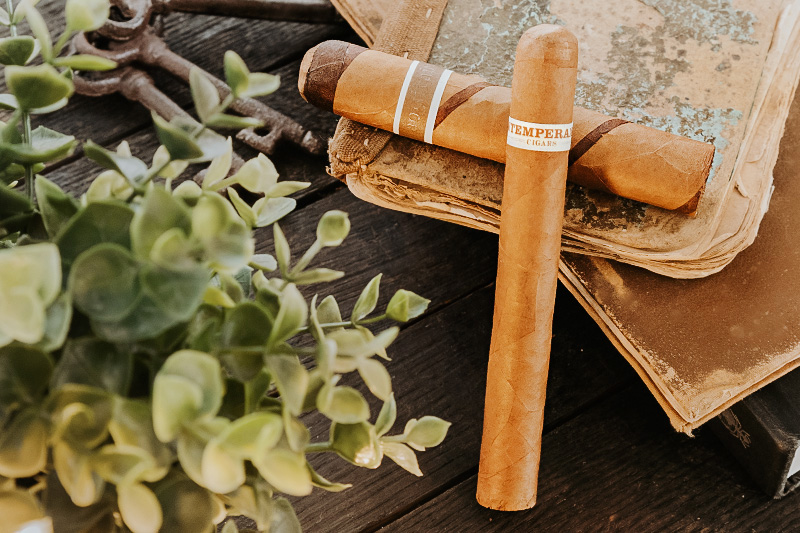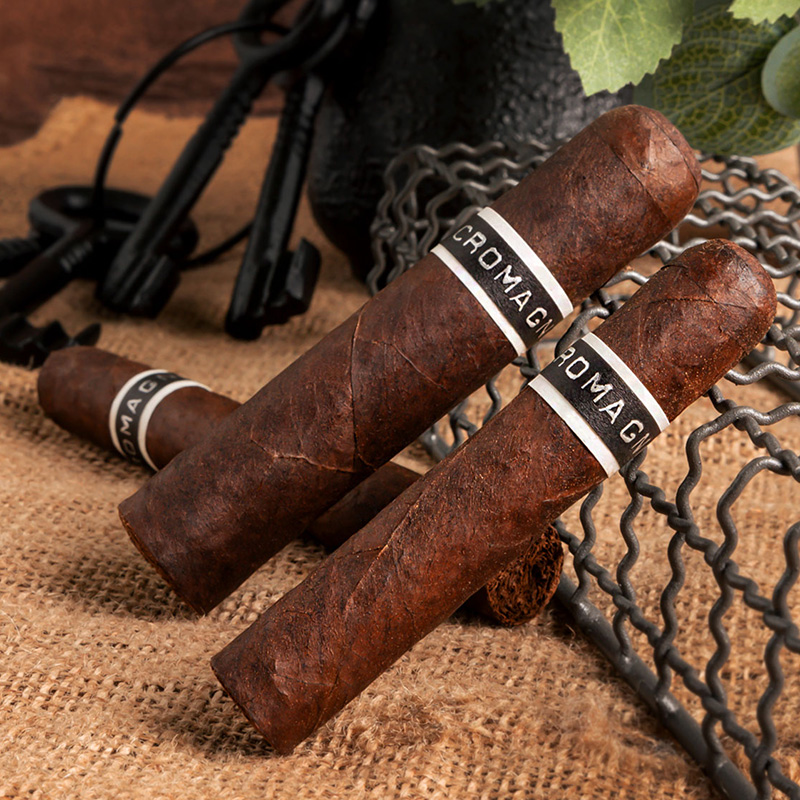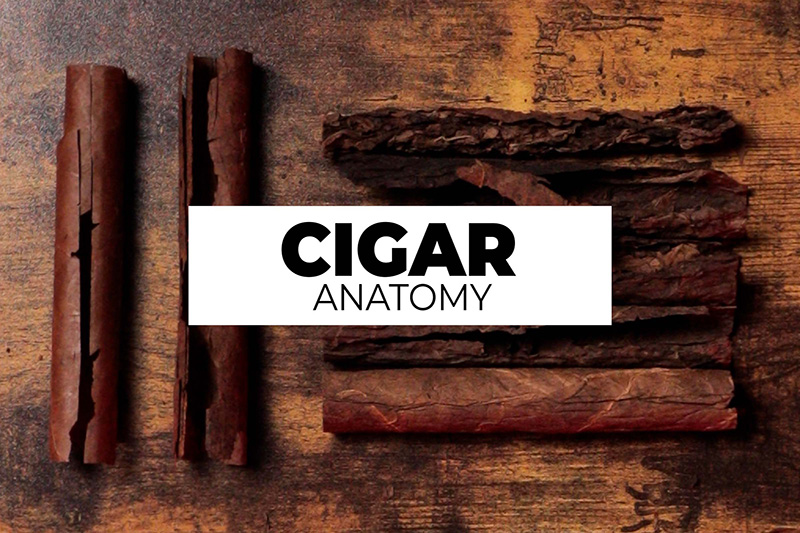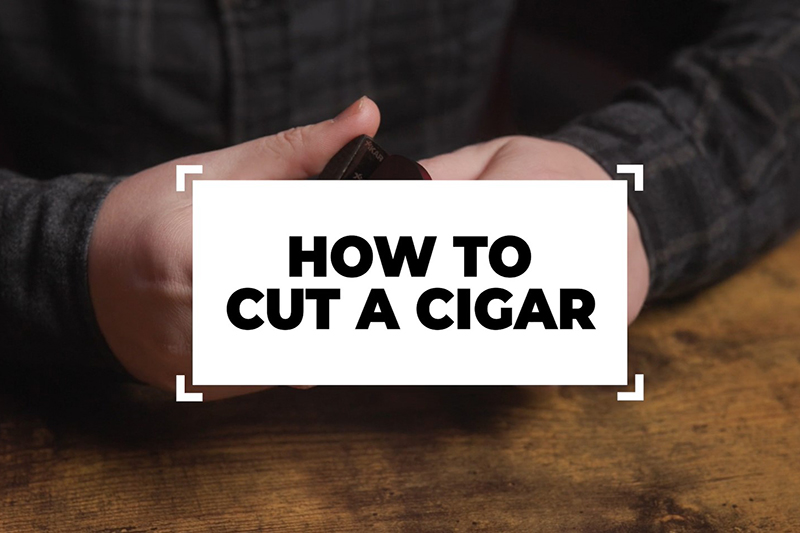Smoke Rings: RoMa Craft Brand Story
I recently had the opportunity to chat with Mr. Mike Rosales, co-owner of RoMa Craft Cigars. We chatted about Mike's involvement in the tobacco industry and the history behind the brand, along with each of the dynamic lines available, from inception to manufacturing to the consumer, and much more.
Note: The following transcription has been edited for clarity and brevity.
The Inception of RoMa Craft
[Michael Rosales]: Thank you all for having me here, and I'm super excited to give a brief rundown. Again, I'm Michael Rosales, also known as the Ro of RoMa Craft; RoMa Craft is inspired by my name, Michael Rosales, and Skip Martin. So Ro and Ma, the first two letters of our last names.
[Tyler Caldwell]: I never realized that.
[MR]: Yeah. That's the reason why the M is capital. Most people will skip that without knowing. We started the company, working on the whole project, in 2010. At the time, my background was in real estate. I was doing real estate development and got partnered up with some people in Costa Rica working on a project, and then met some rollers that were making cigars and really just tapped in with them. I was not a heavy cigar smoker and I was not in the industry at all; I was just a casual person.
I started buying cigars and giving them as gifts to people who came and visited the project we were working on. And then their son wanted to work on his English and wanted to come to the States, and he could make cigars. So I reached out to a local cigar shop in Austin and asked them if they'd be interested in bringing in a roller and sponsoring them. So I imported some tobacco and sponsored his visa, which got him working in the States. And then that led into three or four other rollers all across Texas.
During that time, my partner, Skip Martin, was working with Dell. So he did mergers, acquisitions, and global operations for Dell, but was a heavy cigar smoker. We ran in the same circles and he had invested in a cigar shop in Galveston and eventually ended up taking it over. He built a nice little business on the side, but it got hit by Hurricane Ike in 2008. After that, he was considering whether he should open up another cigar shop or go into making a brand; he was also trying to find himself another investment opportunity. He had brought over some cigars that he was getting from Christian. So back in the day, whenever he had a cigar shop, he would take consumers down to Christian's shop before they sold to Davidoff, and he would buy some abandoned projects or cigars that he thought were really good, sort of like a lost and found project.
[TC]: Sure.
[MR]: But there was one in particular that he really liked and he still had a handful left over. He brought them over to us and asked if we could make something like that. The tobacco that we had in the States was not nearly heavy enough, dark enough, or rich enough. My brother, Esteban, who was running Scandinavia at the time helped us with that. So we started working on basically what became the CroMagnon.
[TC]: Okay.
[MR]: That was late 2010. The cool thing about Skip was that he had a huge following on Twitter, because back then, only MySpace and Twitter were available. The people that would come into Galveston and usually through the cruise ships followed him. He highlighted pictures and also talked about the process of making the cigar itself. Once we finalized the CroMagnon, people were hitting him up saying, "Hey, sell me a fiver."
I'd get on the phone and call people, getting their credit cards. His kids were over there, too, stuffing envelopes of cigars and mailing them out. We were selling about 5,000 cigars a month, all through mail order.
Eventually, a lot of cigar shops that were carrying or working with me through the rollers were like, "Hey, I'm starting to hear some buzz about this cigar ... would you sell it to us?" And I'm like, "Well, I don't know. It's not really my cigar. It's really a project that I'm helping out with, but it's Skip's cigar." And long story short, I went to him and said, "Hey, I think we could actually scale this."
However, in early-to-mid 2011, we got a phone call from Esteban saying that there was no more Broadleaf. Skip said, "Well, just go buy something." But it doesn't really work that way.
[TC]: Right, you find out it's not that easy.
[MR]: Yeah. He was friendly with Jonathan Drew. That year in 2011, we went down to Nicaragua at the same time as the Nicaragua Tobacco Festival was going on. So we went over and we met with Gustavo Cura, and Gustavo said, "Yeah, I got Broadleaf." He showed us all the Broadleaf. And so we ended up buying somewhere around 350-500 pounds of it. We also started looking at some Habano wrappers. Obviously, if CroMagnon wasn't going to be available all the time, or the Broadleaf for CroMagnon, then we wanted to have a backup, which was the Habano version; same blend, just different wrappers. But it's a Ligero priming, so it's a heavier, thicker wrapper leaf.
During this time, we were trying to figure out what to do next. We hadn't really created a company just yet. It was Skip's project. But we jointly ventured on this big tobacco purchase. We also bought some Arapiraca and then we blended up the Connecticut. Skip said, "Okay, great, when can we start making cigars?" So we came up with the Intemperance brands, which were the EC and the BA, which could have tobacco that would always be available. We could make cigars at least with those types of wrappers. And so, long story short, we would launch at the next year's trade show. All that tobacco went into fermentation. We decided to build out the small factory, which was buying Esteban's house. And then we started making small production runs, and Esteban worked for another factory, and then at nighttime, he would come over and they would make cigars in the back of his house. He would hand-select some of his buddies to come over and make cigars. We enclosed the patio and then we put little cabinets around the edges. In his tandem garage, they would do all the drying and curing of the tobacco. I mean, his poor family had tobacco coming out of every direction. Luckily, that was very temporary.
During that time, we started looking at a space and ended up finding a place in downtown Estelí. This place is now called Nica Sueño. We opened that up at the beginning of 2013. And then it's just been off to the races ever since.
RoMa Craft's Manufacturing Process
[TC]: Sure thing. So you guys are making a small amount of cigars for a small clientele at this point. And then, next thing you know, you're jumping right into full-blown manufacturing. Could you tell me a little bit more about that and what you considered before taking off?
[MR]: Yeah. I've been in this industry since 2006. Getting on the shelf is really easy. You go in, establish a relationship, and give retail a shot. They put it on the shelves, and then within 30 days, you ask guys to try to smoke the cigars. They smoke it, but they might not come back and buy it again and again. It's crucial to establish yourself until you get the third, fourth, and fifth orders.
With that in mind, Skip and I discussed how to engage consumers to the point where they come to the retailer and ask for that product. We also discussed how to find a good retailer that understands consumer demand, listens to the consumer, and has a good enough relationship with the manufacturer.
There's much to consider. On top of manufacturing delays, box delays, labels, and so forth, there's an influx of things that can go wrong, such as complications, importations, duties, and taxes that have to be paid. Having a manufacturer make the cigars is relatively easy. But can you get the boxes and the labels on time? Can you get them imported? And you have all this cost upfront that has to go into making the product.
Overall, it's a very complicated equation. And so taking all that into consideration, you also want to have consumer demand. Customer outreach, engagement, and really tapping into what the consumers want to smoke is imperative. RoMa Craft has always taken this approach. We make cigars for people who want to smoke a lot of cigars, and we on purpose have always tried to be in this $7 to $12 MSRP because the guys who smoke five or six cigars a day — if I had to add up how much I smoked on a daily basis, I'm smoking five to seven cigars a day — at $10, you're talking $70-$80 at retail price.
[TC]: And that's just a day, yeah.
[MR]: Right. So we were thinking, "Okay, we want to be at this price point, but want to use heavier, thicker types of tobacco that are unique and a little bit rare that other people don't commonly use." And I'll give you a really good example. When we decided to use the Broadleaf, the Cameroon people thought we were nuts because you have some of the most expensive wrapper and binder just in the cigar. In the BA, we were doing Brazilian and Indonesian, and a lot of people don't like using Arapiraca, especially on a natural, because it's what we call hygroscopic. So it releases and consumes humidity at the same rate, causing splits and tears in the wrapper leaf. Overall, there are a lot of moving parts in all that stuff. That's the DNA of RoMa Craft. This is what we're striving to do day in and day out. At the time, to get into manufacturing more specifically, we felt that it was common for the traditional manufacturers to make cigars that weren't really tapped into what the consumers were looking for. And so we were the conduit to the retailer, a conduit to the consumer, and we strive to make them connected.
[TC]: Sure.
[MR]: By having this social media presence that allows people to interact with us directly and then put out a product that they would find interesting at a price point that they felt that they could afford, we felt we could thrive. It's not easy. I mean, Mother Nature is funny sometimes. We were talking about the Broadleaf: Broadleaf was not available in 2011 or in 2018, and then again, in 2022, it was not as good and was not as accessible. So we've had to pivot. Now we're doing the Pennsylvania Broadleaf, right?
The cool thing about what we do versus a larger company is that we have limited production runs, typically an annual drop, of around 2000 boxes, and sometimes even less, like 300-500 boxes for Fomorian, Black Irish, or Saber Tooth. We don't have any active sales reps that are out on the road. Everything is done in-house through Austin, and that's how we're able to keep our price points down. Essentially, we ask, "Okay, how can we do this in a way that allows us to offer a fair price for a very good cigar that would rival anything in the $15-$25 price point that's really $10-$12."
[TC]: Right. So you mentioned that you limit yourself to 350 accounts. I'm assuming that's because you limit how many cigars you make every year?
[MR]: Yes. In the factory we have roughly 70 people. A lot of that's accounting, packaging, and material preparation. And then we have 12 pairs that make about 300-350 cigars a day. There's a certain amount of raw goods, and the raw goods are becoming finished goods. As for raw goods, such as that Broadleaf we were discussing, we look at what's called yields. So yields are how many pounds per thousand it would take to make 1,000 cigars. For a Connecticut shade wrapper, if it's good, high quality, it may be, let's say, 12 pounds per thousand at $21-$24 a pound.
So, realistically, you have your tobacco leaf, you take the vein out and have two leaves, then you turn them sideways and look at the cuts. You've got some of the edges over time that become too crinkled, which you can't use. So you have to trim the bottom. And this is where it gets really interesting. I can up my production by getting more use out of that type of wrapper leaf on that cigar, and I can get the cost down to 35 to 40 cents, which allows me to sell the cigar at a lower price point at the retail level.
[TC]: And it helps keep your cigars at a consistent level also.
[MR]: Sure. I can pack it full of $7-$10 worth of really good, fermented filler leaf, and make it burn slower, which makes the consumer happier with a better value in a more compact size, utilizing our resources consistently and wisely.
[TC]: What does your production rate look like today?
[MR]: We make around 1.2 million cigars annually. About a million of them are imported into the States and about 200,000-250,000 go to Europe. That's the level that we've stayed at, because at the end of the day, it's easier to control from quality and cost perspectives, ensuring that we have accessible types of tobacco to maintain that on a year-end, year-out basis.
Space is also an important element for our production and manufacturing. We've got pilons working, along with other tobacco equipment that we use every day, and then those cigars are housed and aged. We age all of our thicker tobaccos low and slow for 16 weeks, a very methodical pace that allows for control and excellent quality in the end product.
That's where the craft aspect comes into the name RoMa Craft. We're not the mass market. We use higher, thicker primings in tobacco. We strive to use parts of the tobacco that are limited and rare in an efficient, cost-effective manner to provide affordable cigars to our loyal customers. That's what separates us from a lot of other large cigar manufacturers. We're disciplined to do it the right way, in the way that we think that consumers appreciate.
Cigar Lines From RoMa Craft
[TC]: Very interesting. You touched on a few names of the blends that you guys produce. So let's go into each of those. We know that you started with the CroMagnon and then you eased your way into the Habano with the Aquitaine. What was next after the Aquitaine?
[MR]: The Intemperance brands are designed to be high-quality, value cigars priced between $6.50 and $10. We started with four lines. There was the Intemperance EC, Ecuador Connecticut, which had an Indonesian binder and Nicaraguan and Dominican fillers. There was also the BA, Brazilian Arapirica, which is like a Maduro with the same binder and fillers.
We added Whiskey Rebellion after that in 2017, which has a Habano wrapper and is more like a Rosado. And then recently, last year at the trade show, we launched the Volstead, which is a Sumatran blend.
[TC]: My personal favorite.
[MR]: The concept for the Intemperance line is that it's a prohibition piece. When we started, Skip and I sat down and talked about any challenges that could impact us as we were starting out.
[TC]: Sure.
[MR]: The retailer relationship was number one for us, along with picking guys that could hand sell. The second aspect was considering state regulations, being able to smoke, smoking bans, tobacco taxes, and so forth. We created the Intemperance brands based on the notion that you were either temperate or intemperate, abstaining or taking part, and that was the prohibition propaganda that they'd used to establish the 18th Amendment.
In the tree of intemperance, for anyone who wants to Google that, there's a tree. And one side of the tree is vibrant and alive, it's growing, but the other side is dying. Essentially, if you drank alcohol, your seeds would be bad and unhealthy. But if you abstained, your seeds would be good and healthy. That was the propaganda stuff that they used to get the prohibition started. And so we took the tree of intemperance and put our own spin on it. Similarly, the Whiskey Rebellion is a timepiece. All the names of the cigars, like in the Volstead, basically are time-piece relevant. So instead of calling it a Toro or a Robusto, it's the Roy Olmstead.
The Intemperance line comes with four different wrappers: the Connecticut Shade, the Brazilian Maduro, you have the Habano, and you have the Sumatra, which is Cameroon seed grown in Ecuador. All of these cigars are basically mild to medium without going over the top.
Then the next level up as far as body and strength is CroMagnon. But CroMagnon, the original, had the US Connecticut Broadleaf, Cameroon binder, and Nicaraguan filler. And then recently, at this year's trade show, we've just launched the new CroMagnon Pennsylvania, which is a Pennsylvania Broadleaf wrapper. We use the Sumatra binder in that, and there's a Nicaraguan-Dominican fill in that one as well.
The Aquitaine has Habano, Ligero, Cameroon, and Nicaraguan fillers. And then we throw in Baka. Baka is not really super heavy as far as smoke goes, but it's more of a traditional throwback to what a Cameroon cigar is, with lots of flavor that is more than just straight medium in complexity.
Then you have Neanderthal, which is a Mexican San Andrés full-bodied Double Ligero, with Pennsylvania in it. You sell a ton of it, so it does really well. That's the lineup.
[TC]: Awesome.
[MR]: Overall, we have six core-line sizes: the Pestera Muierilor, Knuckle Dragger, Mandible, Mode 5, Anthropology, and Cranium. There are six core-line sizes in both the CroMagnon and Aquitaine and now Pennsylvania. Neanderthal has three core-line sizes: the HN, the SGP, and the HoxD.
It's crazy to think about because when we started off, we only had four different brands and so many different sizes. Now, you look at the portfolio, and we make all these one-off wonky sizes that are fun and cool to make.
[TC]: I've got to say, I've been a fan since the beginning. Anyone who knows me knows I'm a huge cigar nerd. I'm always trying to find the next big, cool cigar that I see a future in. RoMa Craft has turned me into even more of a cigar nerd over the years. Thank you for all the cigars you guys do make and thank you for coming here today and discussing them with us.
[MR]: Thanks for having me on.
[TC]: Make sure you check out RoMa Craft on-site. You'll find quite a large portfolio available. I highly suggest getting at least one box of everything because you'll want it once you get it.














Comments
This is an interesting take for an owner interview. We don't often hear about price points and the 'dirty' business side of tobacco production. Mike is definitely a businessman with a specific niche in the tobacco industry. Honestly, it's not a great origin story - pretty un-sexy. However, I like that we got to see a very unfiltered view of what goes on in the boardrooms of these brands
I rerom Robally enjoyed this interview, it filled in a lot of blanks I had about the history of the company and the different brands. I was enjoying a Aquitaine Knuckledragger whilst I watched. Thank you both for this. Regards, Rob from the British weasel contingent.